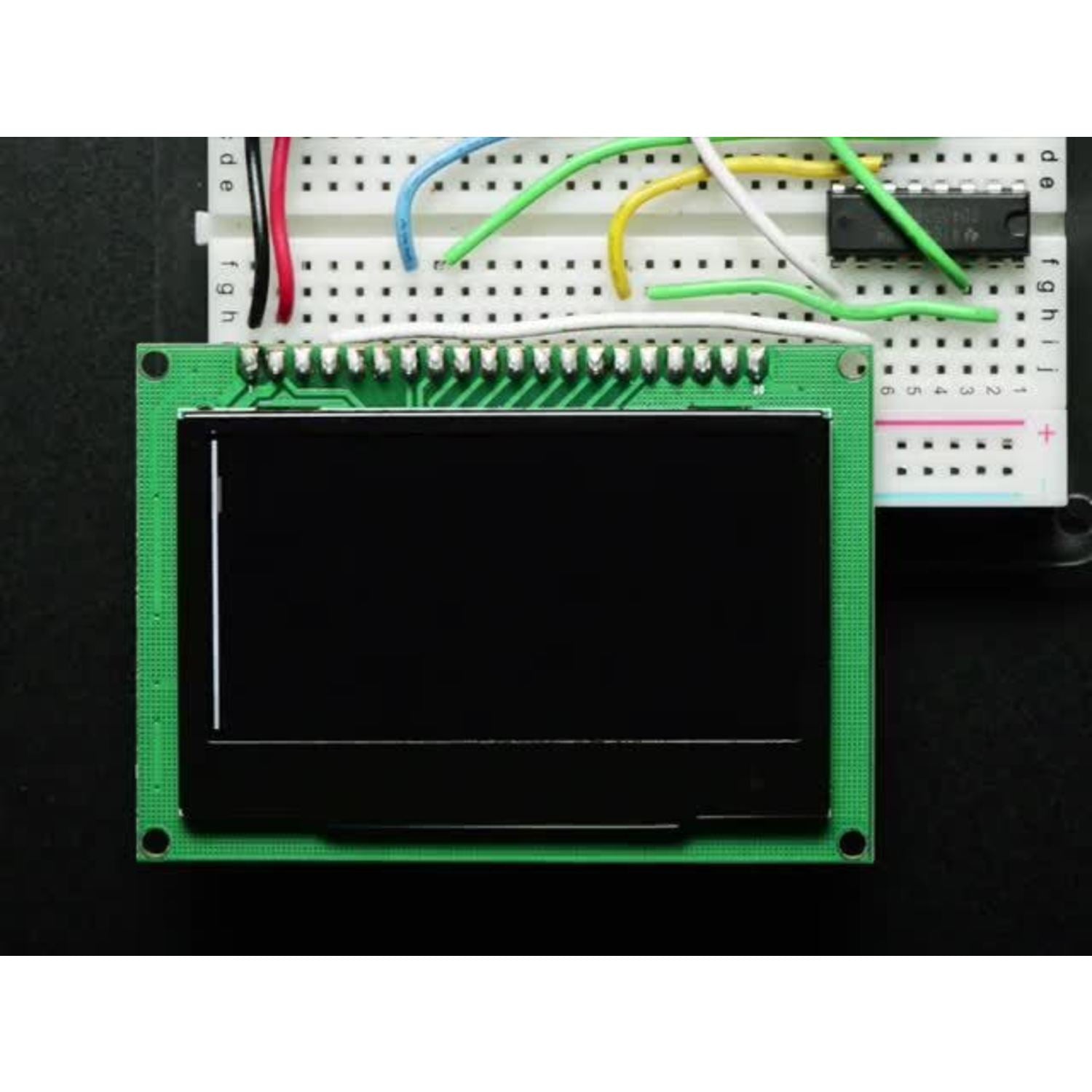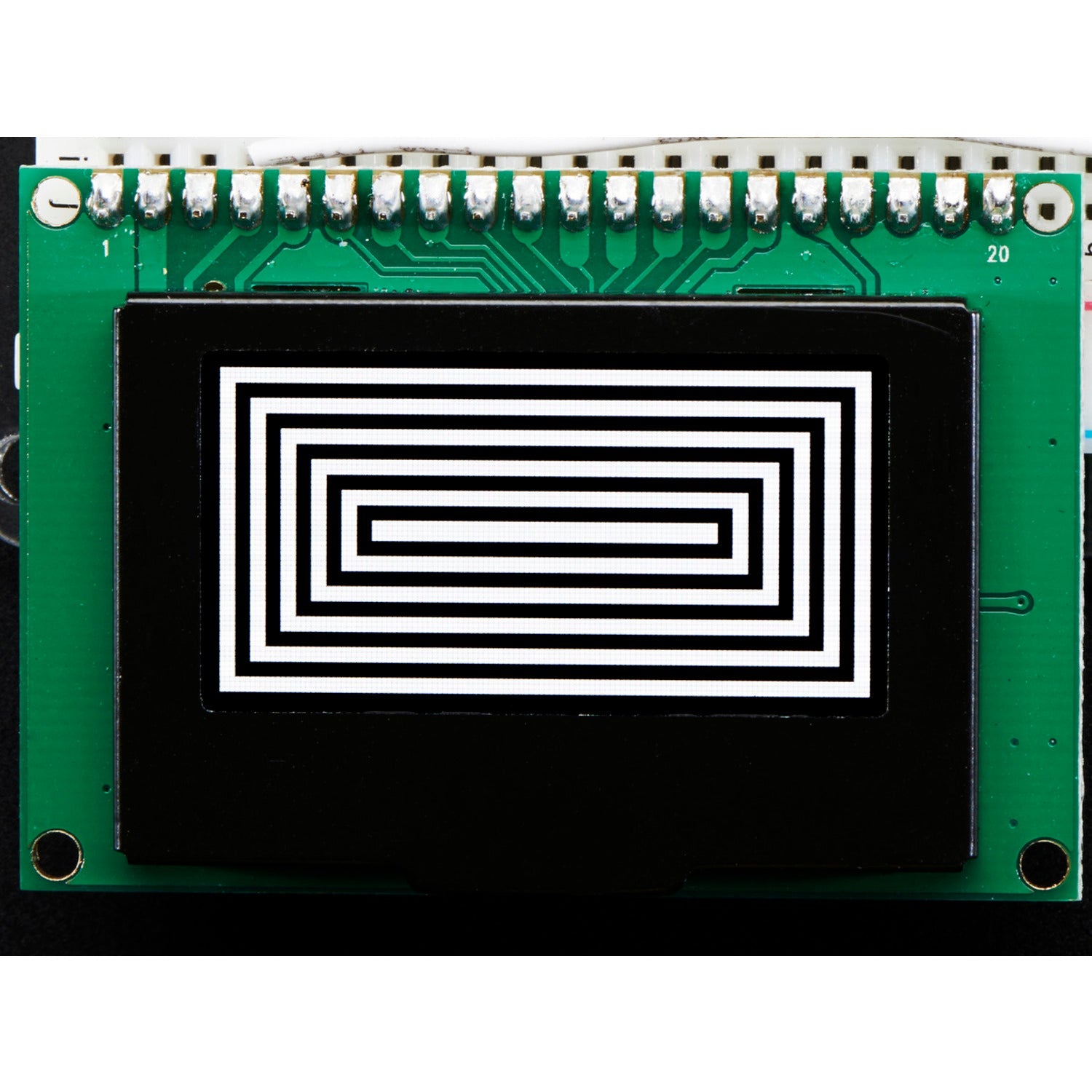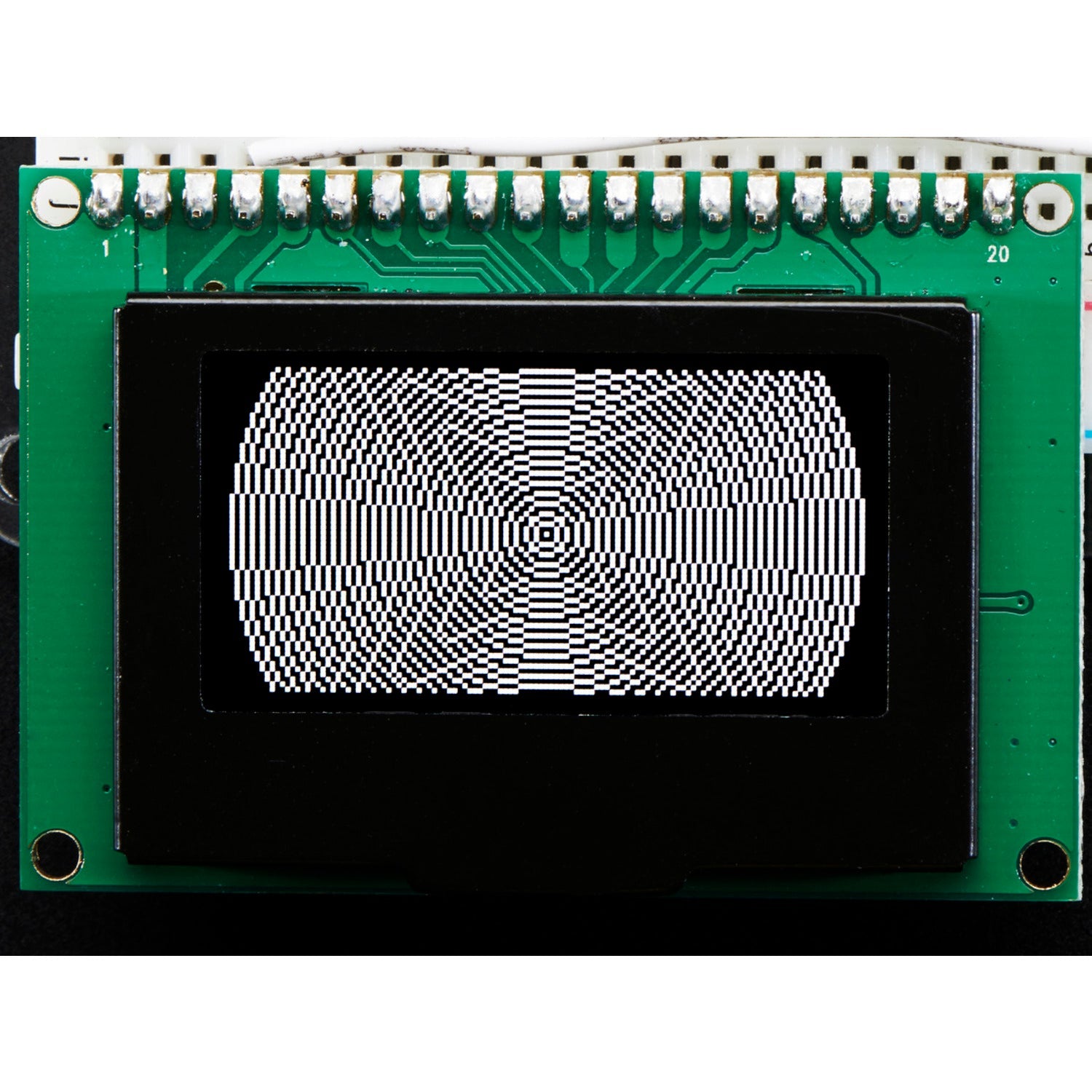If you love our monochrome OLEDs and need a larger one, this display is perfect for you! With a 1.54-inch diagonal, it offers high readability thanks to the OLED's high contrast. It consists of 128x64 individual white OLED pixels, controlled by the chip. Since it emits its own light, no backlight is needed, reducing power consumption and providing excellent contrast. We really love its crispness! The SSD1305 driver chip can communicate in three ways: 8-bit, I2C, or SPI. We recommend SPI as it only needs 4 or 5 wires and is very fast. The OLED requires a 3.3V power supply and 3.3V logic levels. We include a breadboard-friendly level shifter for 5V-logic devices like Arduino. The power usage depends on the lit area, averaging about 50mA from the 3.3V supply. The OLED driver has a simple charge pump to convert 3.3V to high voltage. Each order comes with an assembled OLED module with a bezel and 4 mounting holes. We also include a HC4050 level shifter, a 220uF capacitor, and a stick of header. The display may be in SPI or 8-bit mode, and you can change modes with a bit of soldering. Note: Metro is not included, and a microcontroller like Arduino is required. Getting started is easy! We have a detailed tutorial and Arduino library for text and graphics. You'll need a microcontroller with over 512 bytes of RAM. The library can print various elements quickly and is easy to adapt to other microcontrollers.









Using this display is a breeze. First, make sure you have a microcontroller like Arduino as it's required. Connect the display using the recommended SPI mode with just 4 or 5 wires for fast communication. If you're using a 5V-logic device, use the included level shifter. Power it with a 3.3V supply, and remember the average power usage is about 50mA. The display comes assembled with a bezel and mounting holes. You can solder on the provided header if needed. It might come in SPI or 8-bit mode, and you can change it with a little soldering - check the tutorial for that. For getting started, use our detailed tutorial and Arduino library. Just ensure your microcontroller has more than 512 bytes of RAM. When it comes to maintenance, keep it in a clean and dry place. Avoid exposing it to extreme temperatures or physical shocks. And that's all you need to know to enjoy this great display!